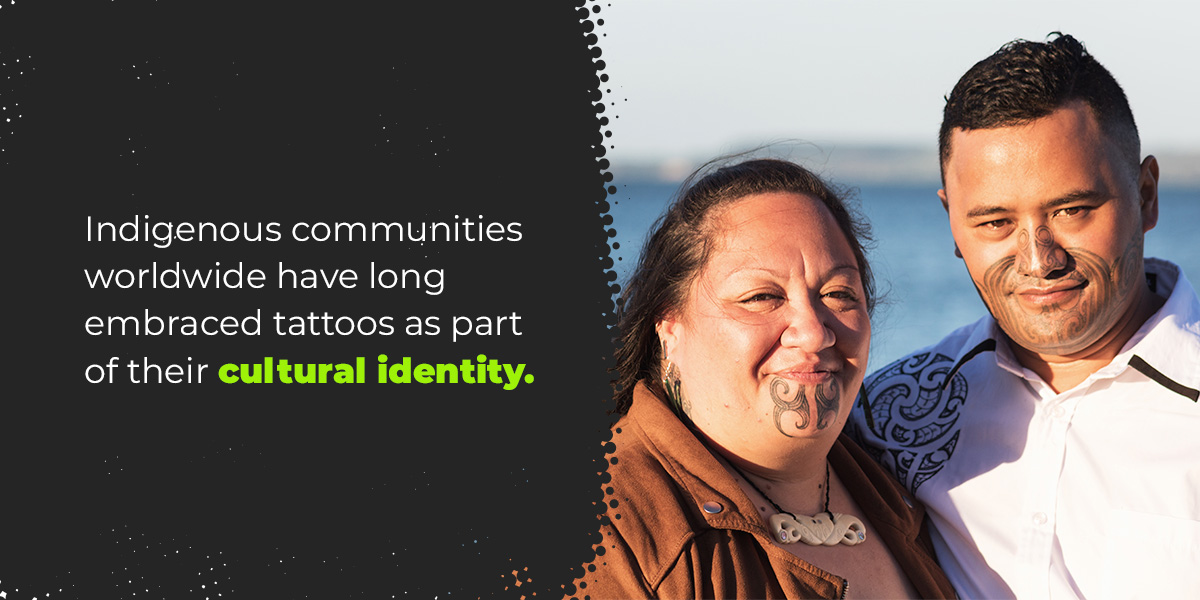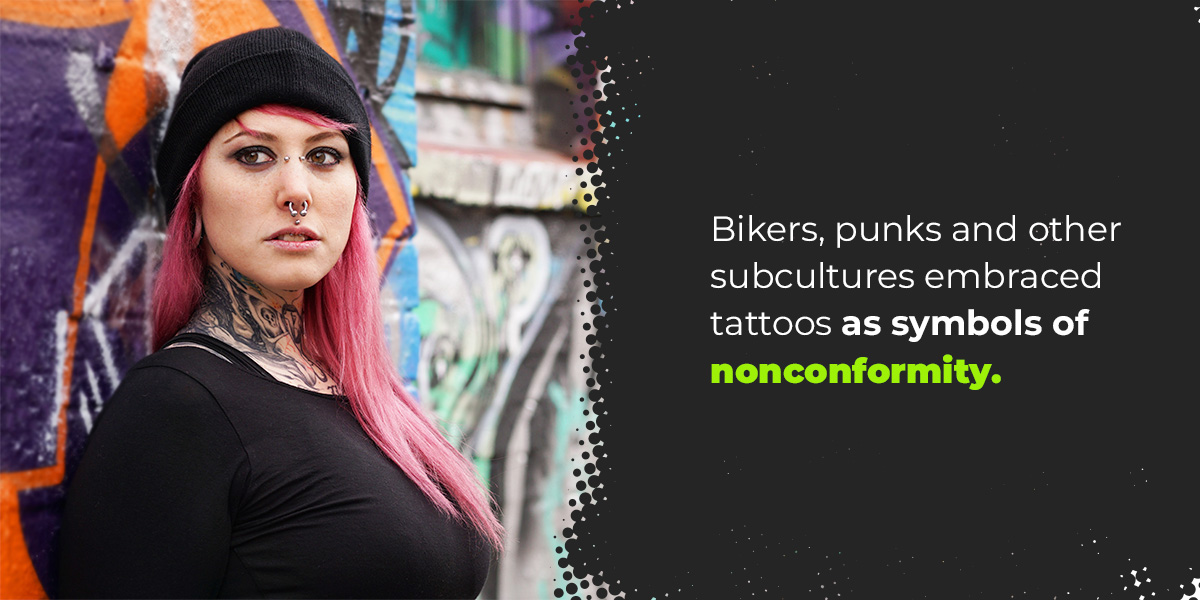
Ink Through Time: Unveiling the Rich Tapestry of Tattoo History
Tattoos, a timeless art form etched into the skin, have a rich and varied history spanning cultures, centuries and continents. As we navigate the vast expanse of tattoo history, we discover a tapestry woven with cultural symbolism, personal expression and a dynamic evolution that mirrors the diverse stories of humanity itself.
Ancient Beginnings
The roots of tattooing extend deep into ancient history, with evidence of tattooed mummies dating back to 3300 BCE found in the Ötztal Alps, a region spanning the border between Italy and Austria. Among the most famous is Ötzi the Iceman, who has 61 tattoos over 19 different body regions. Researchers suggest the marks may have been applied for therapeutic reasons instead of beautification, as many of the tattoos correspond to areas of Ötzi’s body where significant joint degeneration had occurred.
In ancient Egypt, tattoos held cultural and religious significance, often adorning women to symbolize their societal status. Some experts claim that these marks may also have represented an amulet to protect women during pregnancy and childbirth since the abdomen was a popular area for the artwork in their documented tattoo history.
Similarly, the ancient Greeks embraced tattoos as identity markers and rites of passage. The Romans then adopted these traditions and spread them throughout their empire.
Cultural Traditions
Across the Pacific, the Polynesians developed intricate tattooing traditions that conveyed social status, genealogy and personal achievements. The art of tā moko among the Māori people of New Zealand is a living testament to the deep cultural significance of tattoos, where each design narrates a person’s ancestral lineage and life story.
In Asia, tattooing found its place in the intricate designs of Japanese irezumi. Initially used as punishment, it evolved into a revered art form. Today, irezumi embodies the fusion of tradition and modernity, showcasing the resilience and adaptability of tattoo culture.
Indigenous Communities

Indigenous communities worldwide have long embraced tattoos as part of their cultural identity. For example, the Haida people of the Pacific Northwest adorned themselves with tattoos that represented their connection to nature and tribal affiliations. Native American nations like the Cree have a storied tattoo history, and the mummified remains of six Inuit women in Greenland revealed a series of facial tattoos. Many of these adornments marked the bearer’s tribal rank, spirituality or a milestone, such as a successful first hunt.
Members of the native inhabitants of modern-day Ireland, Scotland and Wales proudly tattooed themselves, often depicting their victories in battle. Historians speculate the art served as intellectual intimidation and a warning to potential enemies.
Colonial Encounters
As European explorers ventured into distant lands, encounters with indigenous tattooing practices left an indelible mark on Western perceptions. The term “tattoo” has Polynesian roots, derived from the Tahitian word “tatau,” which Captain James Cook brought back to Europe after his voyages.
Revival in the West
Despite early prejudices, tattoos began to gain acceptance in the West during the late 19th century. Sailors, who often sported tattoos as symbols of their maritime experiences, were pivotal in popularizing this ancient art form. Soon, tattoo parlors began to emerge in major port cities.
In the early 20th century, tattooing found a champion in Martin Hildebrandt, considered the first professional tattoo artist in the United States. Tattoo culture became further intertwined with Western society, with artists like Sailor Jerry shaping the visual language of American traditional tattoos.

In the mid-20th century, we witnessed the emergence of tattooing as a form of rebellion and counterculture expression. Bikers, punks and other subcultures embraced tattoos as symbols of nonconformity. This period also saw the rise of black-and-gray tattooing, notably championed by artists like Jack Rudy.
The tattoo renaissance took root in the latter part of the 20th century. Artists like Lyle Tuttle and Don Ed Hardy helped elevate tattooing’s status as a legitimate art form. The internet further accelerated the exchange of ideas, styles and techniques, fostering a globalized tattoo culture.
Contemporary Diversity
Today, tattoos represent an unprecedented diversity of styles, techniques and cultural influences. From the intricate geometric designs inspired by indigenous patterns to the minimalist elegance of fine-line tattoos, the contemporary tattoo scene reflects a melting pot of creativity.
A Return to Roots
Members of many communities are recognizing the significant history of tattoos in their culture and re-embracing these traditions. For example, indigenous people in the Americas are once again adorning themselves with the tattoos of their ancestors. A similar revitalization movement is underway among Greenland’s Inuit youth as a way to reconnect with their culture.
The history of tattoos is a riveting journey transcending time and cultural boundaries. From ancient rituals to modern expressions of individuality, tattoos have evolved into a global phenomenon that continues to captivate and inspire. As we navigate this intricate tapestry of ink through time, we witness not only the enduring legacy of cultural traditions but also the ever-changing, dynamic nature of an art form that has left an indelible mark on the skin of humanity.
Partner With ELECTRUM Tattoo Supply for Your Tattoo Needs
We’re committed to delivering superior-quality supplies to consumers and artists alike. We carry a comprehensive inventory of essentials, from medical supplies and tattoo after-care necessities to stencils, premium inks and pigments. Our team changed the game with our ground-breaking stencil products and continues revolutionizing the industry through our passion for innovation and quality.
Find an authorized distributor near you or shop securely online for fast shipment. You can also contact us for personalized ordering assistance.

Facebook
Twitter
LinkedIn